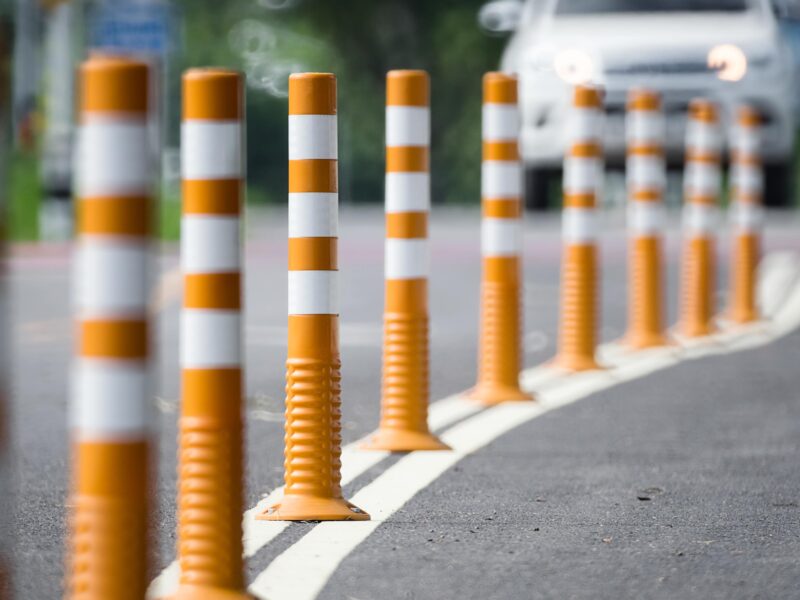
Introduction
Road safety is a critical concern in India, with increasing traffic volumes and road accidents posing significant challenges. One effective yet often overlooked solution to improve visibility and prevent accidents is the use of reflectors.
Reflectors play a crucial role in enhancing visibility, particularly during low-light conditions, fog, and adverse weather situations.
This guide explores the importance of reflectors in road safety, their types, applications, and standards in India, along with best practices for their implementation and maintenance.
The Importance of Reflectors in Road Safety
Reflectors are essential for improving visibility on roads, helping drivers, cyclists, and pedestrians identify obstacles, road boundaries, and vehicles.
They provide passive illumination by reflecting light from vehicle headlights, making them an economical and efficient safety solution.
Key benefits of using reflectors include:
- Improved Night Visibility: Reflectors enhance the visibility of road users and infrastructure during nighttime, reducing the risk of accidents.
- Accident Prevention: Properly placed reflectors help in reducing collisions by alerting drivers to road conditions such as sharp curves, dividers, and pedestrian crossings.
- Low Maintenance: Unlike electric lighting, reflectors require minimal maintenance and have a long lifespan, making them a practical solution for road safety.
- Cost-Effectiveness: Reflectors offer an affordable solution for enhancing road safety, especially in rural and remote areas where street lighting may be insufficient.
- Versatility: Reflectors can be used on a wide range of surfaces, including roads, vehicles, and pedestrian pathways.
Types of Reflectors Used in Road Safety
Various types of reflectors are used to cater to different road safety needs. Some commonly used reflectors include:
1. Road Studs (Cat’s Eyes)
Road studs, also known as cat’s eyes, are embedded into the road surface to provide lane demarcation and improve visibility at night and during foggy conditions. They are available in different colors to indicate specific functions, such as white for lane markings and red for the edge of the road.
2. Delineator Posts
These vertical posts are installed along the roadside to indicate curves, intersections, and road diversions. They are often used on highways and accident-prone zones, providing clear visual guidance to drivers.
3. Reflective Tape
Reflective tapes are used on vehicles, barriers, and road signs to enhance their visibility. They are particularly useful for trucks and heavy vehicles operating at night and are available in different grades for varying levels of reflectivity.
4. Traffic Sign Reflectors
Traffic signs equipped with reflective materials ensure that vital information, such as speed limits, warning signs, and directional arrows, remains visible to drivers in low-light conditions. They play a critical role in preventing confusion and enhancing road discipline.
5. Pedestrian Reflectors
Pedestrian safety can be improved using reflective armbands, vests, and accessories, which make individuals more visible to approaching vehicles. These reflectors are especially important for school children, joggers, and night-time workers.
6. Bicycle and Motorcycle Reflectors
Cyclists and motorcyclists can benefit from reflectors mounted on their vehicles to enhance their visibility. These reflectors can be placed on wheels, pedals, and rear sections for maximum effect.
Applications of Reflectors in India
Reflectors are widely used across various applications to enhance road safety in India, including:
- Highways and Expressways: Reflectors help in lane marking, median visibility, and curve identification, reducing the risk of accidents due to poor visibility.
- Urban Roads: Used for traffic calming measures, pedestrian crossings, and road signage to ensure orderly movement in densely populated areas.
- Construction Zones: Temporary reflectors are installed to warn drivers about ongoing construction activities and help navigate safely.
- Vehicles: Mandatory reflectors on commercial and private vehicles improve visibility and compliance with government regulations.
- Railway Crossings: Reflectors are used to highlight railway crossings to prevent accidents at unmanned level crossings.
Indian Standards and Regulations for Reflectors
The implementation of reflectors in India is governed by regulations set by the Indian Road Congress (IRC) and the Bureau of Indian Standards (BIS). Some key guidelines include:
- IRC 35: Specifies the use of reflective road studs for highways to improve nighttime visibility.
- BIS IS 11093: Defines quality standards for retro-reflective devices used on roadways, ensuring their durability and performance.
- Motor Vehicle Act: Mandates the installation of reflective tapes on commercial vehicles for better nighttime visibility and compliance with safety norms.
- Traffic Police Guidelines: Local authorities may implement additional requirements for reflector placement to enhance safety in specific regions.
Tips for Choosing the Right Reflectors
When selecting reflectors for road safety applications, consider the following factors:
- Reflective Efficiency: Ensure the product meets the required visibility standards and provides adequate reflectivity in different conditions.
- Durability: Choose materials that can withstand harsh weather conditions, heavy traffic loads, and potential impacts.
- Installation Requirements: Opt for easy-to-install solutions to minimize disruption to road operations.
- Compliance: Verify that the product complies with relevant Indian regulations and standards to avoid legal and safety issues.
- Environmental Factors: Consider reflectors that are resistant to dust, rain, and extreme temperatures, especially in regions with challenging weather conditions.
Maintenance of Reflectors
Regular maintenance of reflectors is crucial to ensure their effectiveness over time. Maintenance activities may include:
- Cleaning: Regularly cleaning reflectors to remove dirt, dust, and debris that may reduce their effectiveness.
- Inspection: Periodic inspections to check for damage or wear and tear, ensuring timely replacement of faulty reflectors.
- Replacement: Ensuring that damaged or faded reflectors are replaced promptly to maintain road safety standards.
Conclusion
Reflectors are an indispensable part of road safety infrastructure, playing a crucial role in reducing accidents and enhancing visibility on Indian roads. Whether used for highways, urban streets, or vehicles, their implementation contributes to a safer commuting experience for all.
At SKYK, we offer high-quality reflective solutions that comply with Indian standards and provide optimal road safety performance. Explore our range of products and take a step toward safer roads.
Looking to improve road safety? Contact SKYK today to learn more about our reflective solutions and how they can benefit your infrastructure projects.
